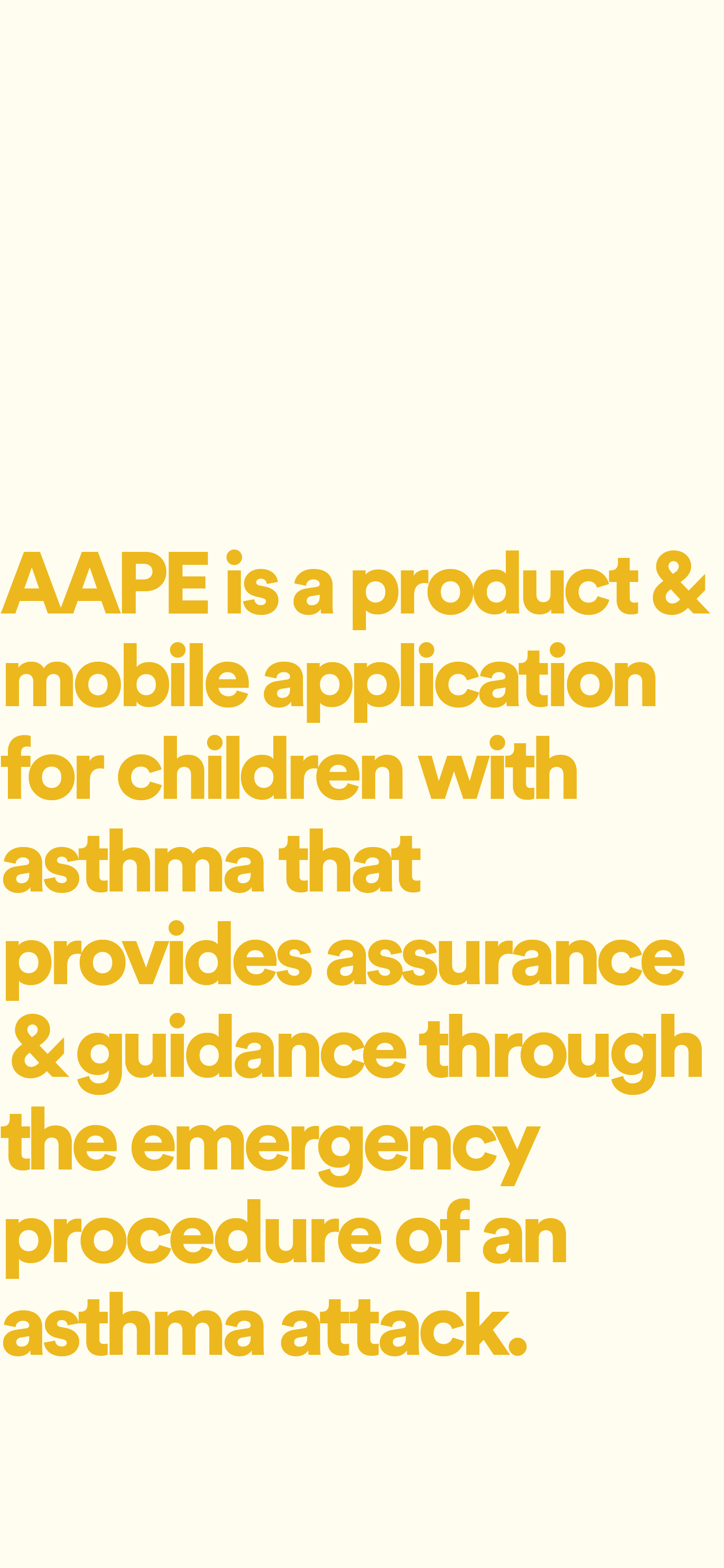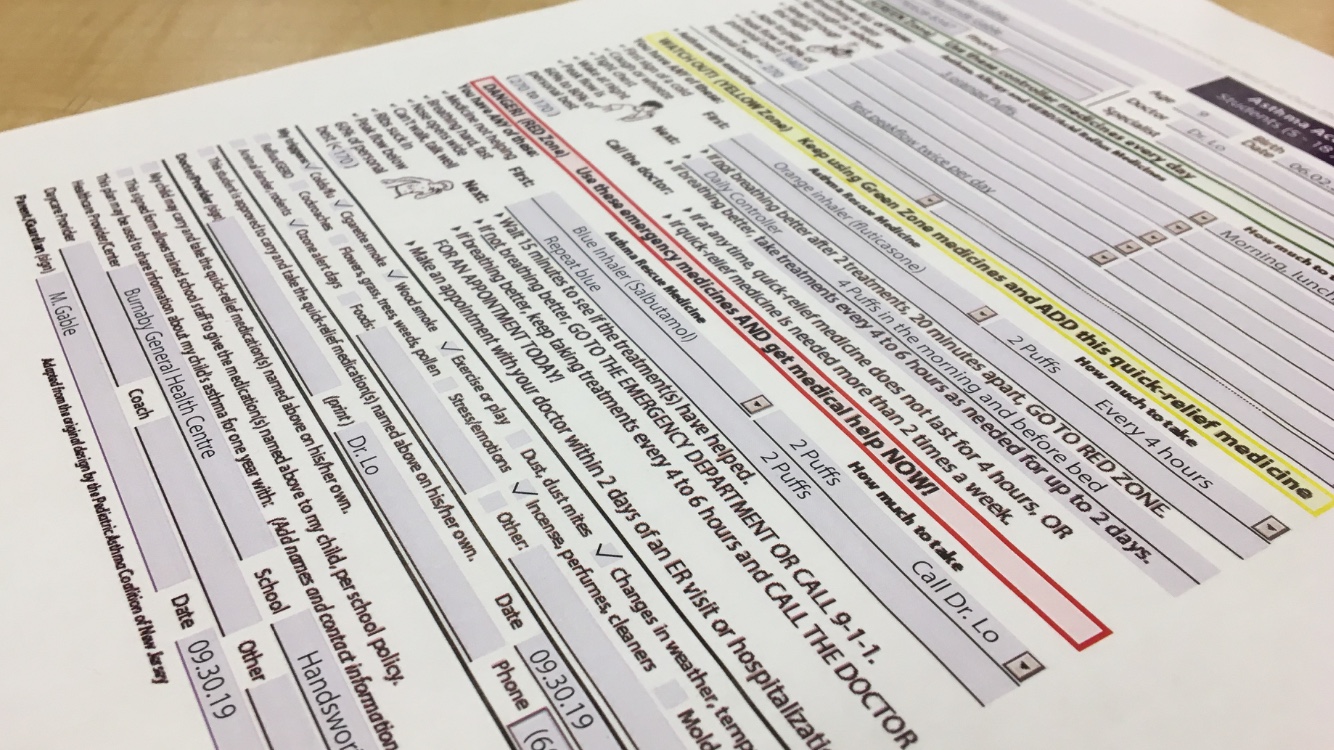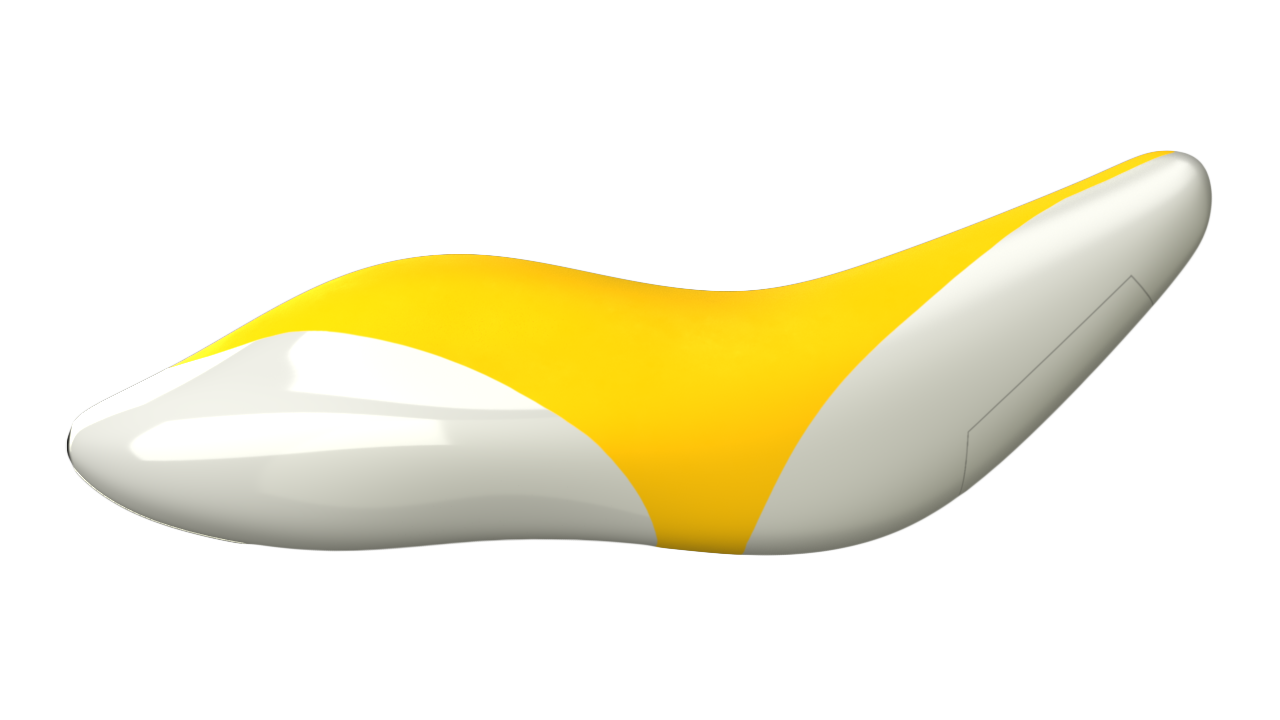





problem context
“A peak in childhood [ages 5-15] asthma attacks that coincides with the start of the school year in September, known as ‘back to school’ (BTS) asthma, accounts for 20%–25% of all attacks requiring hospitalisation...”
- Bundle N, Verlander NQ, Morbey R, et al Monitoring epidemiological trends in back to school asthma among preschool and school-aged children using real-time syndromic surveillance in England, 2012–2016J Epidemiol Community Health 2019
“It’s not unusual to see a two or three-fold increase in emergency room visits in September and October related to asthma.”
- Dr. Megan Sandel, Boston Medical Center

inconvenient forms
necessity for guardian
cognitive overload

this is the AAPE.


when an asthma attack strikes
Myles is informed that he is having an asthma attack by a
flashing red light on the product. He will receive a notification,
prompting him to immediately begin the recovery process upon opening his phone.
The emergency procedure begins by asking Myles to inhale a puff from the AAPE.
Here he presses a button on the AAPE, which fires the medicine into the chamber for him to inhale.
Upon releasing the medicine, the app will transition him to the next step.
Anxious from rushing to take his inhaler,
AAPE prepares Myles for a set of questions by helping him calm down.
He is reminded to sit up straight, breathe slowly, and that there is no need to rush.
While the peak flow can judge his condition by the strength of his lungs, it is not a comprehensive tool.
The following questions are imperative in understanding how serious his condition has become.
Legible type, simple language, and distinct colours present the questions clearly and concisely.
Myles is able to respond to the questionnaire by simply tapping on the condition that applies to him,
allowing AAPE to quickly guide him to the next step.
After selecting a symptom,
Myles must then wait a short period for the medicine to combat his asthma attack.
As a necessary part of the recovery process, we decided to utilize the waiting period by
prompting Myles to seek help from an adult.
At this stage, Myles may put the phone down. When the waiting period is up,
he will receive a notification to resume. If Myles was successful in obtaining help,
the app prompts a trusted adult to view the card at the bottom.
This card serves to update and onboard them, explaining what they can do to help Myles.
At this final stage, AAPE asks Myles if he is still feeling out of breath.
AAPE allows Myles to independently control his asthma attacks.
This extends to giving him the option to notify his guardians.
If Myles is short of breath, he will not be able to convey his condition to a guardian over the phone.
‘Notify Guardian’ provides a text message report outlining what has happened,
and the next steps for them to take. The app informs Myles that he must get to the hospital immediately,
providing a 911 dial option.
On a daily basis, the AAPE app functions as an asthma manager and tracker.
Children with mild to severe asthma must test their Peak Flow and inhale puffs of medicine
multiple times throughout the day. AAPE sets reminders and push notifications for these everyday tasks.
This data, as well as data concerning the details of his asthma attack history is stored and compiled into
reports. These reports can be generated and sent to his parents and family physician, to provide detailed
records of Myles asthma history over time.
Currently, Peak Flow meters categorize the results of lung strength measurements
into three categories. The colour green denotes healthy and clear control. The colour yellow signals caution,
as symptoms may improve or worsen. The colour red denotes an asthma attack. AAPE’s user interface reflects
these colours, aside from red which was changed to a calming blue.
When Myles returns from an asthma attack he must take extra caution,
as his lungs and asthma condition has not yet fully recovered from the trauma of an attack.
The next time he opens the app, the experience will be different. As required after a serious episode,
AAPE will increase the number of asthma management tasks, and the UI will turn yellow to remind Myles
of his cautionary state. To provide comfort and hope to relieve uncertainty, AAPE will emphasize daily
achievements and encouraging language.
